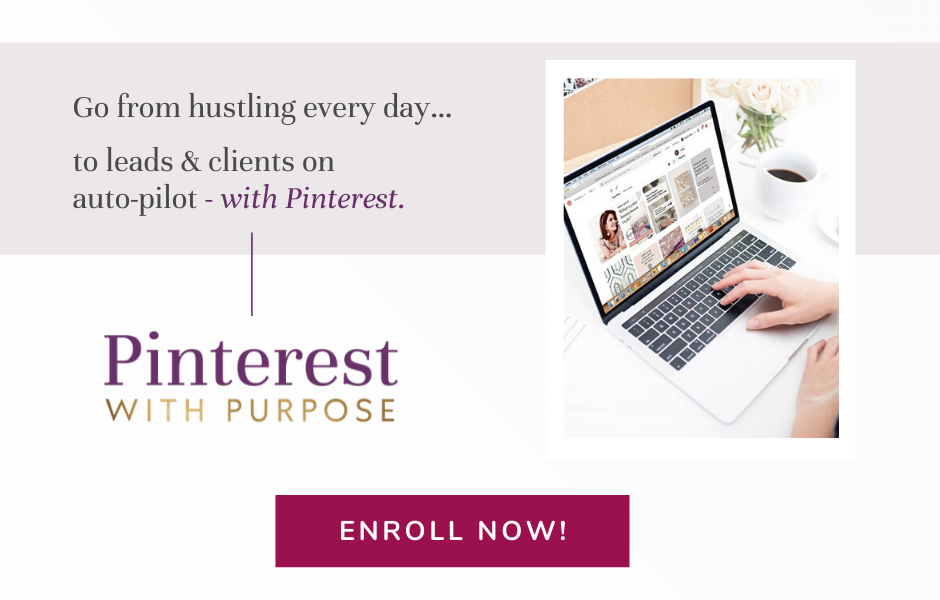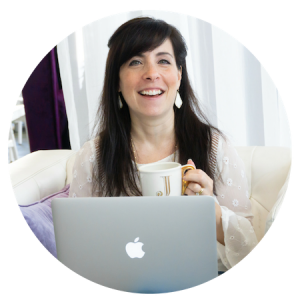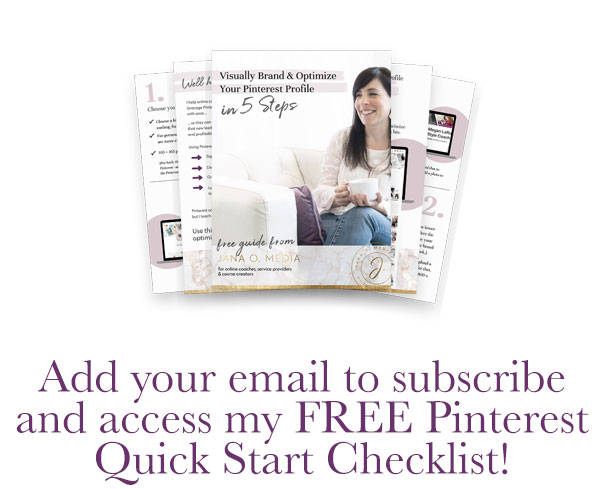So many online coaches, course creators, and service providers I talk to are coveting the business results that Pinterest has the power to deliver!
When set up the right way, it’s is a powerful sales tool for your coaching, consulting, or course creation business. (Plus, it’s low-maintenance. So, while you’re at your son’s soccer game, out to lunch with mom – or even at your day job – Pinterest is working to keep you visible and generate leads!)
Of course, the key to getting real results from Pinterest (Eyes on your offers! Leads! Clients! Subscribers! More sales!) is to set your profile up strategically. A profile that just pretty will not attract clients, send you traffic, or net you leads.
Now, I’m sure you’ve heard… Pinterest is not a social media platform… It’s a ______________________. (Everyone say it with me now… )
Yes! It’s a search engine.
Many online entrepreneurs have heard this before and can now fill in that blank! (Entrepreneur 10,000 Pyramid, anyone?) So, yeah. We know it’s a search engine. But, what does it really mean? That’s what we’re chatting about today.
To give your lead generation strategy the cushy Pinterest upgrade you crave, there are some mental shifts that you must make. And, most of those shifts roll out from the search engine thing. So let’s review what you need to know.
📌 Shift 1: The large majority of Pinterest users who find your pins on Pinterest are not going to be your followers.
Pinners are going to find your pins in their searches and their smart feeds.
A pinner is shown your pins because Pinterest the algorithm determines that there’s a match there; that your content is relevant / of interest to her and/or to her search. This is based on:
a) the keywords that you’ve used in your profile and on your pins; and
b) what that person has pinned before… what she just searched for a moment ago… what she’s searched for in the past… and basically what Pinterest knows about her…
Basically, Pinterest wants to show users content they’ll find interesting, relevant, helpful… And it will show them pins based on a “match” between your keywords and the cues users have sent the algorithm about what they like and need.
So, most people find your pins in their feeds and in their searches are not your followers. As a result, the number of followers that you have on Pinterest is actually not super important. (Doesn’t that feel like a relief? Ahhhh…)
This is a shift because it’s in such sharp contrast to Instagram (obvi), and to Facebook, LinkedIn, or Twitter, where the number of followers that you have can be really make-or-break.
Here’s what’s also important to understand:
Most of the people that find your content on Pinterest don’t already know you. They have not made a conscious decision to hit follow on your Instagram, to connect on LinkedIn, to join your Facebook group.
In fact, pinners are mostly call cold traffic.
At first glance, that may sound like it’s not a good thing. 😉
Oooooo, cold traffic. 🙁 Sounds scary!
But here’s the thing. Because Pinterest can be so low maintenance, this is actually an amazing, positive and powerful thing. With a strategic Pinterest presence, you will constantly – and easily – be bringing new, targeted traffic (new ideal client types!) into your sphere and funnel.
And because you can automate and schedule most Pinterest pins, it can be working behind the scenes for you while you’re focusing on serving your people or on other aspects of your business.
New people searching for the things YOU help with and offer? And discovering your content and offers when they do?
New eyes on your content every day?
… Yes, please!
Note: The other side of that coin, of course, is that people who are finding your pins are not already primed and ready to buy from you. They’re not immediately going to be like, “Whoa, pass me my wallet.” You’ll need to lead with value in your content and warm them up a bit first. (But you’re smart! You know that!)
📌 Shift 2: Pins are evergreen. They will circulate for a long time!
Pins are NOT lost within minutes in a fast-moving newsfeed. (And we love this!)
In contrast, when you post on Facebook for example, you hope your people are online at that moment. You hope someone will like and comment, so your post will get some up-front traction and not get lost at the bottom of the feed. Same thing on Twitter. The average tweet has a shelf life of mere minutes!
The content that you create on Pinterest will stick around and be re-shared for months – even years. In fact, it’s likely to gain traction and build in popularity / reach over time.
One upshot of this: What you pin must stand the test of time. We don’t delete pins (not good for your account!), so it’s important to pin things that will be relevant for some time.
This also means that you are going to be pinning the same rotation of content more than once.
Yep, you read that right!
Now I know that’s a little funny, initially. You will also need to add fresh pins to the ones that you have, as well. But each time you add, your stable of pins is growing. And they will be there for people to discover in search – for months, even years!
This is a big shift, too, and takes some getting used to.
📌 Shift 3: Keywords are everything on Pinterest!
Okay, maybe not everything… (quality content, attractive images… these are important too.) But, remember, pinners find your pins because of the keywords. So if you hope to be found – and by the right people! – the keywording step is imperative.
In my course Pinterest with Purpose, I focus a good deal of time on exactly how to do your keyword research, and on properly keywording six distinct areas of your Pinterest profile. (Check out the course!)
I teach keywording because keywords are the backbone of your Pinterest strategy. So, if you don’t do keyword research – or you don’t optimize your account for your keywords – then you don’t have a strategy on Pinterest. (Sorry no sorry!)
It’s not sexiest or most fun part of Pinterest, I know. (I mean, I personally love it 😍, but I know I’m the exception.) But it can be simple and interesting – if you know how to do the research and how to incorporate your findings.
Pinterest is such a powerful tool for your marketing and sales toolbelt. If set up intentionally with a strategy:
It’s effective. Want some proof?
This online coach gets 50+ visits per day to her website, and they result in dozens of new email subscribers every week. Screenshot:
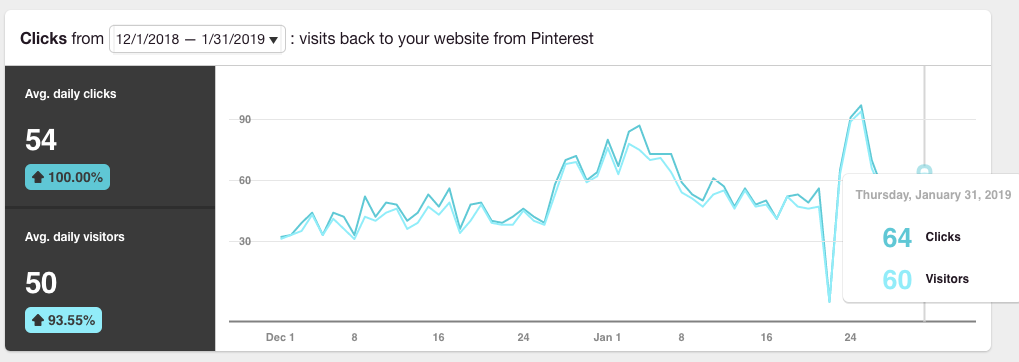
And this online service provider saw almost 700 clicks to her content and offers within the first 30 days! Screenshot (shows an average of 23 clicks per day):
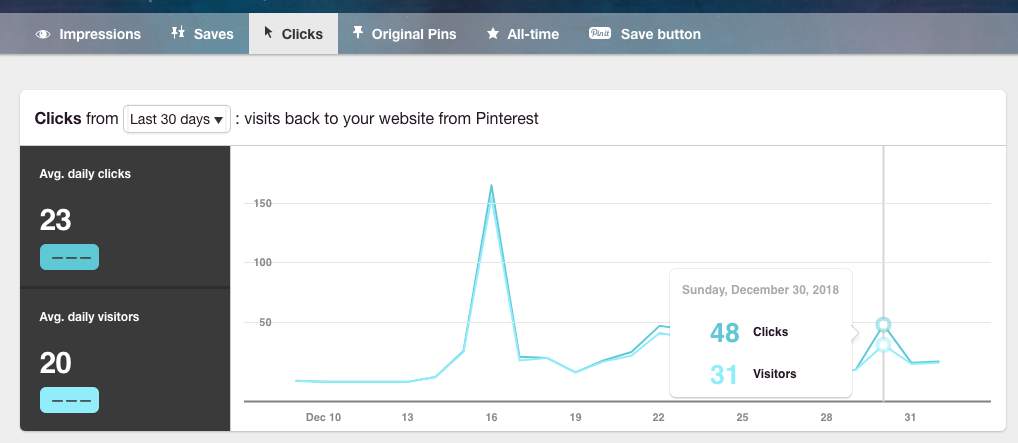
It’s also low-maintenance. After setting up Pinterest and Tailwind* – the scheduling software – I recommend that my clients invest about 4 to 6 hours per month to maintain and grow their Pinterest reach. Much of the work can be “set it and forget it” – for 30 to 60 days at a time.
I want you to see real results from Pinterest – traffic, leads, sales, greater revenue, greater impact. My wish is that this article helps prepares you for these three big shifts… that it sets you up to get started on a profile that’s not just pretty, but also profitable!
If you would like a guide through the process, my course Pinterest with a Purpose may be the perfect solution.
It’s a self-study e-course that reveals the methods I’ve been refining with my 1:1 clients for two years now…the strategies that work for coaches, consultants, and course creators. It takes you, step-by-step, through the process of getting your Pinterest profile set up optimally – so it can serve your business.
You’ll learn EXACTLY how to yourself up optimally – to get traffic, leads, and sales using Pinterest! Check it out and enroll here!


